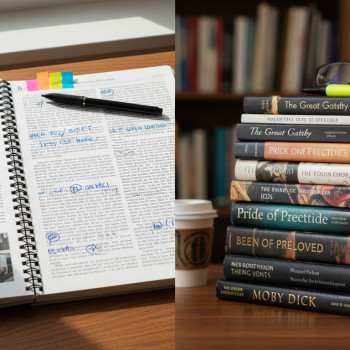Portfolio Rescue: Fixing Weak AP Submissions Late
There’s a very particular kind of anxiety that comes with realizing, a little too late, that your AP portfolio might not be ready. Maybe a project didn’t turn out the way you imagined, the pacing for a body of work got away from you, or feedback revealed gaps you hadn’t noticed. Breathe. This guide is for that late-night, late-week, or even last-week push: a practical, compassionate plan to triage, improve, and present your portfolio so it reads as intentional, technically sound, and — most importantly — clearly communicates your growth.

Why a Last-Minute Rescue Can Still Work
First: don’t assume “late” equals “hopeless.” AP evaluators are trained to look for evidence of learning, experimentation, and the ability to make artistic or academic choices — not perfection. A thoughtfully revised submission that highlights process, decisions, and meaningful growth often performs far better than a technically flawless but conceptually shallow portfolio. With focused effort, you can raise clarity, strengthen key pieces, and better tell the story of your work.
Step 1 — Triage: What to Fix First
When time is limited, you need a triage plan. Spend your first hour evaluating your submission with these questions:
- Which pieces best show intentional choices and growth?
- Are there any technical errors (lighting, cropping, labeling) that are quick to fix?
- Which weaknesses are fatal versus cosmetic?
- What does the AP rubric emphasize for your course (e.g., evidence of process, synthesis, technique)?
Be ruthless: prioritize fixes that (a) address rubric criteria, (b) improve clarity of intent, and (c) take the least time for the biggest impact.
Quick Triage Checklist (30–60 minutes)
- Scan every piece and mark: Keep (showcases strengths), Improve (fixable issues), Remove (distracting or irrelevant).
- Label pieces clearly — title, medium, date, and a one-line intention statement.
- Identify 2–3 pieces you can elevate quickly (rephotograph, edit, reframe, or write a sharper annotation).
Step 2 — Fast Technical Fixes (High Impact, Low Time)
Many submissions lose points for avoidable technical issues. These are the low-hanging fruits:
- Rephotograph or rescan artwork under neutral, even light. Avoid reflections, shadows, and skewed angles.
- Crop consistently. Use the same aspect ratio and margins for all images so the portfolio feels cohesive.
- Correct color and exposure sparingly — don’t over-edit. Your goal is accurate representation.
- Check filenames and labels — inconsistent naming can confuse reviewers and may appear unprofessional.
Tool Tips
You don’t need fancy software. Free or built-in tools (phone camera grid, basic crop/exposure editors) are enough. For small adjustments, aim for uniformity more than perfection.
Step 3 — Strengthen the Story: Intentions, Process, and Reflection
AP reviewers care about your thinking. If technical fixes are the bones, the narrative is the heart. Use annotations and a short reflective statement to clarify why each piece exists and how it contributes to your growth.
- Write concise intention statements (1–2 sentences): focus on goals, constraints you set, or problems you wanted to solve.
- Include process evidence: thumbnails, sketches, drafts, or short notes about experiments and failures.
- Reflect on outcomes: what you learned and how you would change the work if you had more time.
Even a 50–150 word reflection placed strategically can transform how evaluators see your work. It signals metacognition — the ability to think about your thinking — which is highly valued.
Step 4 — Reordering and Curation: Let the Strongest Story Lead
Presentation matters. If you can’t fix every piece, reorder. Put your strongest, clearest pieces first and last: the opener sets expectations, and the closer leaves the lasting impression.
- Lead with clarity: a piece that immediately shows intentionality and skill.
- Place experimental or process-heavy pieces in the middle with clear annotations.
- End with a confident piece that synthesizes what you learned.
When to Remove a Piece
It’s okay to remove anything that distracts or contradicts your narrative. A shorter portfolio with coherent intent is better than a longer one that confuses the reader.
Step 5 — Efficient Deep Improvements (When You Have a Little Extra Time)
If you have a few days rather than a few hours, add depth strategically:
- Rework compositional problems: simplify, crop differently, or emphasize the focal point.
- Revisit materials or media you can realistically rework — sometimes a small change (a different finish, a tighter edit) changes the piece’s message.
- Add one process artifact per major piece: a thumbnail, sketch, or short clip can multiply the perceived thought behind the piece.
Remember: the goal is not to re-create the entire body of work but to add meaningful, demonstrable evidence of intent and learning.
Step 6 — Final Polish: Consistency, Proofreading, and Submission Prep
Before you submit:
- Run a consistency pass: uniform labels, fonts (if digital), and image sizes.
- Proofread every annotation. Simple grammar errors can distract from your ideas.
- Verify technical submission requirements: file format, resolution, naming conventions, and deadline time zone.
- Ask one trusted reader (teacher, mentor, parent) for a 15-minute review focused on clarity, not opinions.
Submission Day Checklist
| Task | Why It Matters | Estimated Time |
|---|---|---|
| Final image quality check | Ensures accurate representation of your work | 15–30 minutes |
| Consistent labeling | Professionalism and clarity for the reviewer | 10–20 minutes |
| Proofread annotations | Prevents distracting errors | 10–15 minutes |
| Upload and verify files | Avoids last-minute technical rejections | 20–40 minutes (depends on upload speed) |
Real-World Example: One Student’s Rescue
Imagine Maya, a busy senior finishing AP Studio Art. Two weeks before the upload deadline she realizes three of her eight pieces have poor photos and one annotation is nearly blank. Panic sets in — but she follows a plan:
- Hour 1: Triage — she marks two pieces as remove because they don’t fit her theme, and three as improve.
- Day 1: Technical fixes — she rephotographs two works in natural window light and crops consistently.
- Day 2: Narrative work — she writes short but specific intentions and process notes for all remaining pieces.
- Day 3: Peer review — her art teacher gives feedback and helps reorder the pieces for a stronger narrative.
- Submission: She uploads early and double-checks file names and formats.
Result: Maya’s portfolio becomes coherent and clearly communicates why each piece matters. The curated set, honest reflections, and consistent presentation make a better impression than her original, larger but messy submission would have.
How Parents Can Help Without Doing the Work
Parents are invaluable in a rescue — but the help should empower, not replace, the student’s voice. Here’s how to be useful:
- Offer practical support: help schedule time, provide a calm space to work, or assist with a rephotography setup.
- Be a sounding board for intention statements. Ask clarifying questions that help the student express their choices.
- Help with logistics: ensure files are named correctly, the student has a reliable internet connection at submission time, and deadlines are clearly noted.
- Resist editing student reflections into a voice that isn’t theirs — evaluators read authentic student thinking.
When to Ask for Professional Help
If you’re running out of time, targeted outside help can be efficient. A short, focused session with an experienced tutor or mentor who understands AP portfolios can:
- Identify the highest-impact fixes quickly.
- Offer phrasing for concise, reflective annotations.
- Provide mock reviews so students see the work from an evaluator’s perspective.
Sparkl’s personalized tutoring, for example, can provide 1-on-1 guidance, tailored study plans, and expert tutors who help with focused review sessions and AI-driven insights to highlight what matters most on the rubric. If you choose professional support, make sure it’s targeted — one or two sessions that sharpen strategy are usually more valuable than ongoing general coaching at the last minute.
Common Mistakes to Avoid
- Over-Editing: Trying to perfect every pixel can waste time and remove evidence of process.
- Being Vague: Weak or generic annotations don’t help evaluators understand your thinking.
- Ignoring Requirements: Missing a file-format or naming rule can disqualify good work.
- Letting Perfectionism Paralyze You: Done and clear is better than incomplete and confusing.
Mindset: Calm, Strategic, and Honest
Your tone matters when time is short. Approach the rescue like a professional — triage the problem, make a plan, execute quickly, and document decisions. Be honest in reflections: evaluators respect thoughtful critiques of your own work. Saying, “I planned X, tried Y, and learned Z” shows maturity and growth more than pretending everything was intentional.

After Submission: Reflection and Next Steps
Once you submit, treat the experience as feedback for future work. Schedule a short reflection:
- What choices had the most impact on improving the portfolio quickly?
- Which skills or habits can you start building now to prevent a last-minute rush next year?
- How did the act of writing intentions change how you see your work?
Use this to build a concrete plan for growth: weekly sketch time, better photo documentation habits, or a small portfolio checklist. If you want guided follow-up, Sparkl’s personalized tutoring can help craft a long-term plan that balances AP requirements with college goals — but keep that for after the stress of the deadline.
Final Encouragement
A late rescue can be a powerful learning moment. It teaches prioritization, communication of intent, and the value of process documentation — skills that matter far beyond any single AP score. Even if the portfolio doesn’t become a masterpiece overnight, a calm, thoughtful, and well-presented submission shows evaluators you can reflect, adapt, and improve.
So take a breath, make a plan, and start with the highest-impact fixes. You’ll be surprised how much clarity and quality you can add in a focused, disciplined push. And when things settle, consider recording your process so the next submission starts stronger and calmer than this one did.
Quick Rescue Action Plan (Summary)
- Triage: Decide Keep/Improve/Remove.
- Fix: Rephoto, crop, and correct exposure.
- Clarify: Write short intention and reflection statements.
- Curate: Reorder to lead with your best pieces.
- Polish: Consistency, proofreading, and submission verification.
- Reflect: Learn from the process for next time.
You’ve got this. The difference between panic and progress is a clear plan and small, focused actions. If you’d like, I can help draft tight intention statements, a proofreading pass for annotations, or a final checklist tailored to your specific AP portfolio — tell me which AP subject and how much time you have, and we’ll plan the rescue together.



















No Comments
Leave a comment Cancel